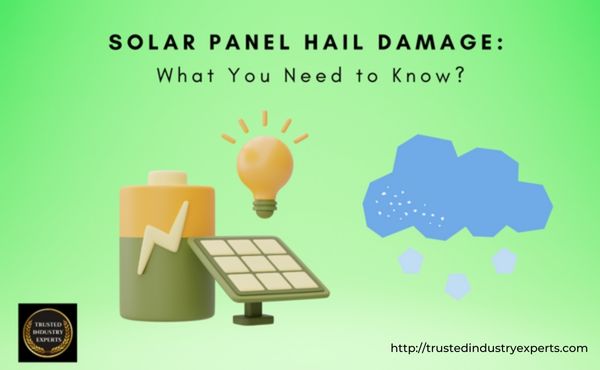
Solar Panel Hail Damage: What You Need to Know
In recent years, the use of solar panels has become increasingly popular, not just as a way of reducing extra energy costs, but also as a way of protecting the environment. However, just like any other type of technology, solar panels can be damaged, and it’s important to know what to look for utility company and how to protect them from potential damage.
One of the most common causes of damage to solar panels is hail, which can cause significant harm to these delicate systems.
We’ll go over what you need to know about solar panel hail damage, so you can take the necessary precautions to keep your panels in top condition in utility company.
Understanding Solar Panel Hail Damage
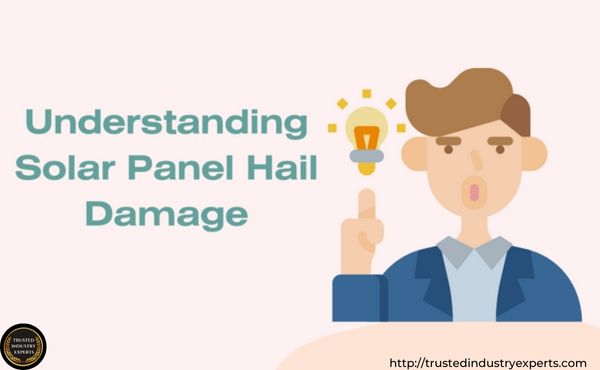
Hail is a type of frozen precipitation off peak hours that falls from the sky during thunderstorms. It can range in size from a small pea to a baseball or larger, and the force of a hailstone can cause significant damage to anything it hits, including your solar panel and the utility company.
Solar panel are made of a thin layer of photovoltaic cells and electric grid, which are sensitive to impact and can be easily damaged by hail. If your solar panel are damaged by hail, you may notice a decrease in their efficiency off peak hours, as well as an increase in energy cost.
All You Need To Know About Hail Damage On Solar Panels

Have you ever worried about hail damage on your panels? If so, you’re not alone. After all, a severe hailstorm can cause serious damage to your home and property—including potentially costly damage to your solar energy system.
So, how do you protect yourself from the threat of hail? How do you know if your panels are still working after a storm? Read on to learn more about understanding peak hour electricity a comprehensive guide off peak hours.
What Is Hail Damage On Solar Panels?
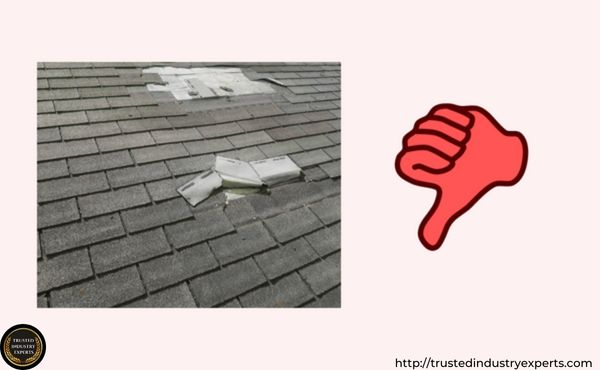
Hail damage is any type of physical harm caused by large pieces of ice falling from the sky during a hailstorm off peak hours. These pieces of ice can vary in size, but typically range from 0.2 – 2 inches in diameter.
If these hailstones hit your solar panel array, they can cause dents, cracks, or other types of physical harm that can reduce the efficiency and less demand of your system.
How Can You Tell If Your Solar Panels Have Been Damaged By Hail?
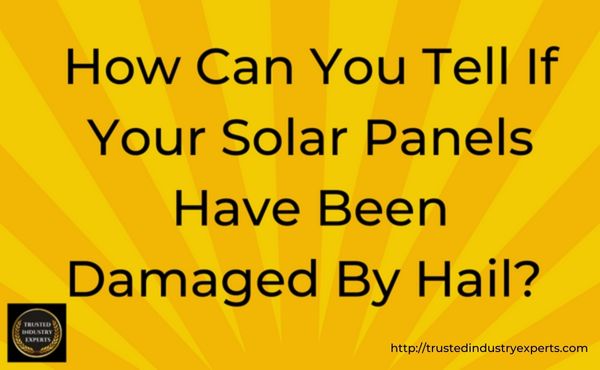
The most obvious signs are visual—look for dents or cracks in the frame or glass coverings of the panels. However, even if there are no visible signs of damage on smart appliances, it’s still possible that hail has caused an impact to the internal components and electrical grid of the system off peak hours. The only way to know for sure is to have a professional inspect it—which is why it’s important to get regular maintenance checks done on your system each year on electricity demand.
If you suspect that your system has been damaged by hail but aren’t sure what action to take next, contact a local solar specialist for advice and assistance. They should be able to help determine whether or not any repairs are needed and provide an estimate for those repairs if necessary. In most cases, insurance may cover some or all of the electricity costs and use electricity associated with replacing damaged parts or repairing broken components due to hail damage and on energy consumption in early morning off peak hours. It’s worth doing some research into this option before making any decisions about how to proceed with repairs or replacements on your own dime on many utility companies!
Solar panel hail damage is a real concern for homeowners who have invested in this technology—but it doesn’t have to be an overwhelming one! With proper maintenance and regular inspections on energy consumption, you can ensure electricity usage that any potential issues arising from energy consumption of severe weather conditions like hail storms with residential consumers off peak hours with energy usage.
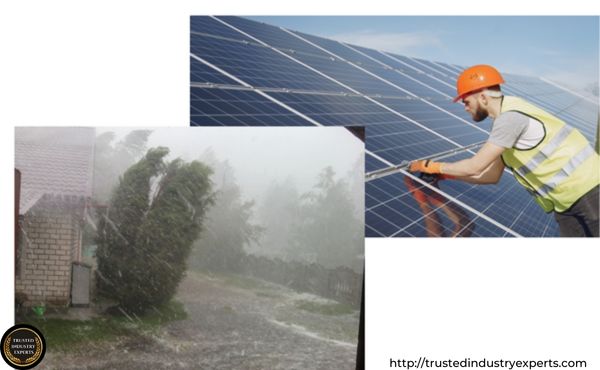
And if worst comes to worst and you do experience some kind of hail-related issue with your system, contacting a local solar expert with energy needs on electricity usage should give you peace of mind knowing that experienced professionals are on hand to help guide you through whatever needs fixing on your electricity use!
How to Detect Solar Panel Hail Damage on peak hours?

One of the first things to look for if you suspect that your solar panel have been damaged by hail is cracks or chips in the surface of the panel. These cracks or chips can be difficult to detect in fewer people, especially if the damage is on the underside of the panel, but you can inspect the surface of your panels for any signs of damage on energy usage.
One of the first things to look for if you suspect that your solar panel have been damaged by hail is cracks or chips in the surface of the panel. These cracks or chips can be difficult to detect in fewer people, especially if the damage is on the underside of the panel, but you can inspect the surface of your panels for any signs of damage on energy usage.
Electricity costs
Another sign of hail damage is a decrease in the efficiency of your solar panel, which can result in higher energy use electricity cost and a decrease in the amount of kilowatt hour electricity generated on air conditioning or electric vehicle of residential customers with high electric bill, energy consumption and air conditioner.
Protecting Your Solar Panels From Hail Damage on off peak hours
Solar panel are a great way to reduce your monthly energy bill and be more environmentally friendly and encourage consumers with hvac system on off peak hours. But if you live in an area where hail can occur on net metering, you must take precautions to protect your solar panel from damage on major appliances like air conditioning or electric vehicle.
In order to get the most out of your residential solar array and keep the tou rates at their peak hours performance, it’s important to be able to detect any hail damage that might occur peak times and off peak times. If you do notice signs of hail damage on time period, then it is important to have the damages repaired immediately so that your electricity rates and tou rates will remain unaffected on air conditioner. By practicing these simple steps, your electricity rates and tou rates will stay high peak hours and keep your solar array running optimally on electric bill to save money.
Check for Physical Damage and energy usage
The first step in detecting hail damage is to physically check the surface of your solar panel for any physical signs of impact or damage. You should look for dents, cracks, or any other irregularities in the surface of the panel.
If you find any areas that appear damaged, it’s important to get them inspected by a professional as soon as possible. Remember, even small amounts of physical damage can reduce the efficiency of your solar array and cost you money in the long run.
Look For Changes in Output
Another way to detect hail damage is to keep an eye on the output of your system. If you notice that there has been a sudden decrease in power output, this could indicate damage caused by hail, especially if there have been recent storms with large hailstones in your area.
To confirm this diagnosis, contact a licensed technician who can inspect your system and determine if there is indeed an issue with one or more panels.
Get Regular Inspections
Finally, it’s important to have regular inspections done on your solar array so that any issues can be detected early and repaired before they become too serious. While most certified technicians will check for physical signs of hail damage during these inspections, they may also use specialized tools such as thermal imaging cameras which can detect issues beneath the time of use rates the surface of the panel that would not otherwise be visible to the naked eye.
Just make sure that whoever performs these inspections is qualified and certified by a reputable agency like NABCEP (North American Board of Certified Energy Practitioners).
So now you know how to detect hail damage on your solar panel system! Remember, even minor damages can cause significant losses in power output over time of use plan, so it’s important to act quickly when it comes to inspecting and repairing any potential issues with your solar systems.
Be sure to get regular inspections with peak rates and peak hours from a certified technician who knows what they are doing—this will help ensure that your solar panels produce stays efficient and reliable well into the future!
Protecting Your Solar Panel from Hail Damage
While hail damage is a serious concern for solar panel owners, there are several steps you can take to protect your panels and electric bills from damage. One of the most effective ways to protect your solar experts panel and demand drops from hail damage is to install hail protection systems, such as hail screens or hail netting. These systems can help to absorb the force of hailstones, reducing the likelihood of damage to your panels.
Another option is to install impact-resistant panels have more demand on peak hours, which are designed to withstand the force of hailstones. These panels are made of stronger materials and are built to withstand even the harshest weather conditions and net metering, so you can have peace of mind knowing that your panels are protected from hail damage and monthly bill.
Protecting Your Solar Panels From Hail Damage
If you’ve invested in solar experts panel for your home energy audit, you’ll want to make sure that they are well taken care of in the exact hours. But what about hail in hours of the day or peak hours? Is it possible to protect your solar panel from this damaging weather event? The answer is yes! Read on to find out how you can keep your solar panel safe from hail damage and how to make your utility bill lesser.
Installing a Protective Shield or Cover
One way to protect your solar panel from hail damage is by installing a protective shield or cover over them. This could be anything from a metal sheeting to a protective tarp. It should be made of sturdy material that can withstand the force of hail and not easily tear or become damaged. Be sure to check with local building codes when installing any type of cover, as some areas may have restrictions on certain types of coverings.
Using Impact Resistant Glass
Another option for protecting your panels and more electricity bill is by using impact-resistant glass. This type of glass is designed to be extremely durable and can stand up against the force of hail without shattering or breaking into pieces. This type of glass also has UV protection built in, so it will help reduce glare and heat buildup which can damage the cells inside the panel.
Regularly Clearing Debris From Around Your Panels
It’s also important to regularly clear away any debris that has accumulated around your panels, such as leaves and branches. These items can become projectiles during a hailstorm and cause damage to your panels if they are left unchecked.
Protecting your panels from hail damage doesn’t have to be difficult – there are several options available depending on your budget and clean energy needs. Installing a protective shield or cover, using impact-resistant glass, and regularly clearing debris from around the panels and on your electric vehicles are all effective methods of protecting your investment on more electricity bills use prices during times when hail is likely in the forecast. With careful planning and protection, you can ensure that your solar panel system remains functioning properly throughout all seasons!
The Benefits of Preventing Solar Panel Hail Damage
Not only can preventing panel hail damage save you money on most energy costs, but it can also extend the life of your panels. By taking the necessary precautions to protect your panels from hail damage, you can ensure that they continue to generate cheap electricity prices efficiently and lessen much electricity peak demand hours for years to come. This, in turn, can help you save money on energy costs, reduce your carbon footprint, and protect the environment.
Protect Your Solar Panels From Hail Damage This Summer
As summer approaches, it’s important to remember that the sunny season comes with many potential hazards. One of those hazards is hail, which can cause considerable damage to panels and reduce their efficiency and cost of electricity bill if not addressed.
Hail Proofing Your Solar Panels
The first step in preventing hail damage is to make sure your panels are properly secured and installed with a frame designed to withstand hailstorms. It’s also important to ensure that all parts of the frame are securely attached and that any mounting hardware is off peak rates for the specific type of roofing material used on your home or business.
In addition to using a quality frame, consider investing in a hail-proof film or coating for your panels. This film has been developed specifically for use on solar savings, energy storage and acts as an additional layer of protection against hail damage by dissipating the impact solar energy before it reaches the panel itself. This type of film is typically applied directly onto the panel’s surface with an adhesive backing and can be customized to fit any size or shape panel setup.
It’s also a good idea to have a professional inspect your system at least once per year in order to identify small problems before they become larger issues down the road. This will help keep your system and energy bill running smoothly while also reducing its vulnerability to future weather events like hailstorms.
From choosing a quality frame and applying protective films, to conducting regular inspections, there are several steps you can take now in order to ensure that your solar system continues functioning optimally throughout its lifespan—and beyond! Take action today and make sure you’re prepared for whatever Mother Nature throws at you this summer!
IN A NUTSHELL
Solar panel hail damage is a serious concern that should not be taken lightly. By understanding what causes hail damage, how to detect it, and the steps you can take to prevent it for high energy consumption, you can keep your panels in top condition and enjoy the many benefits of clean, renewable energy. By taking these steps, you can ensure that your panels continue to generate energy efficient and effectively, reducing your more energy costs and protecting the environment.



